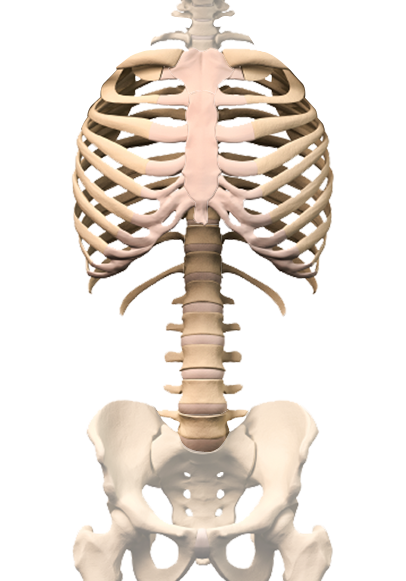Xiphoid Process
Xiphoid process or xiphisternum is a small cartilaginous (soft bone) extension of the lower end of the sternum. Sternum is a bone present in our chest (on the front) where the first 7 ribs make their connection in the center. The xiphoid process is usually mineralized (ossified) in adults which means that it is hardened to a solid bone.
read moreXiphoid Process
LOCATION
The xiphoid process is present in the center of the body (sometimes a little deviated to either side). It is considered to be located at the level of the 9th thoracic vertebra. It is also considered to be present in the epigastrium (upper, central part of the abdomen), in the region of the T6 dermatome.
DEVELOPMENT
The xiphoid process is felt and seen as a lump below the sternal notch, more so in lean newborns and young ones. As the age advances it becomes more adult like and by the age of 19 to 25, it fuses with the body of the sternum. This joint with the body of the sternum is a fibrous joint which, unlike the synovial joints of major articulations of our body, is immovable.
VARIATION
There are some differences in the structure of the xiphoid process which occur during its development. It can sometimes be bifurcated or perforated. These structural variations run in families (are inherited) which can help in grouping of these families. These differences in structure have no health risks and are simply changes in shape and form.
FUNCTION
The xiphoid process being small sized and cartilaginous merely has a supporting role. It does not articulates directly with the ribs but reinforces the thoracic cage by indirect attachment of the costal cartilages.
CLINICAL SIGNIFICANCE
Xiphoid process though is small but it has some clinical implications. When administering CPR (Cardiopulmonary Resuscitation), too much pressure at the site where xiphoid process is located should be avoided. This is because by applying pressure directly on it can result in the breakage of the xiphoid process. This broken piece of bone could then puncture the diaphragm. It could also result in the laceration of the liver causing life threatening hemorrhage.
Xiphisternum is also used as an anatomical landmark to carry out the process of pericardiocentesis. It is the process where excess of fluid in the pericardium is taken out (aspirated).
Xiphoid process is sometimes also the cause of a condition known as xiphoidalgia. There is tenderness of sternum in this syndrome with symptoms such as abdominal pain, chest pain, nausea, and pain radiating to back and shoulders. This may be caused by lifting heavy objects. Steroids and anesthetics are used for its treatment.
Report Error



